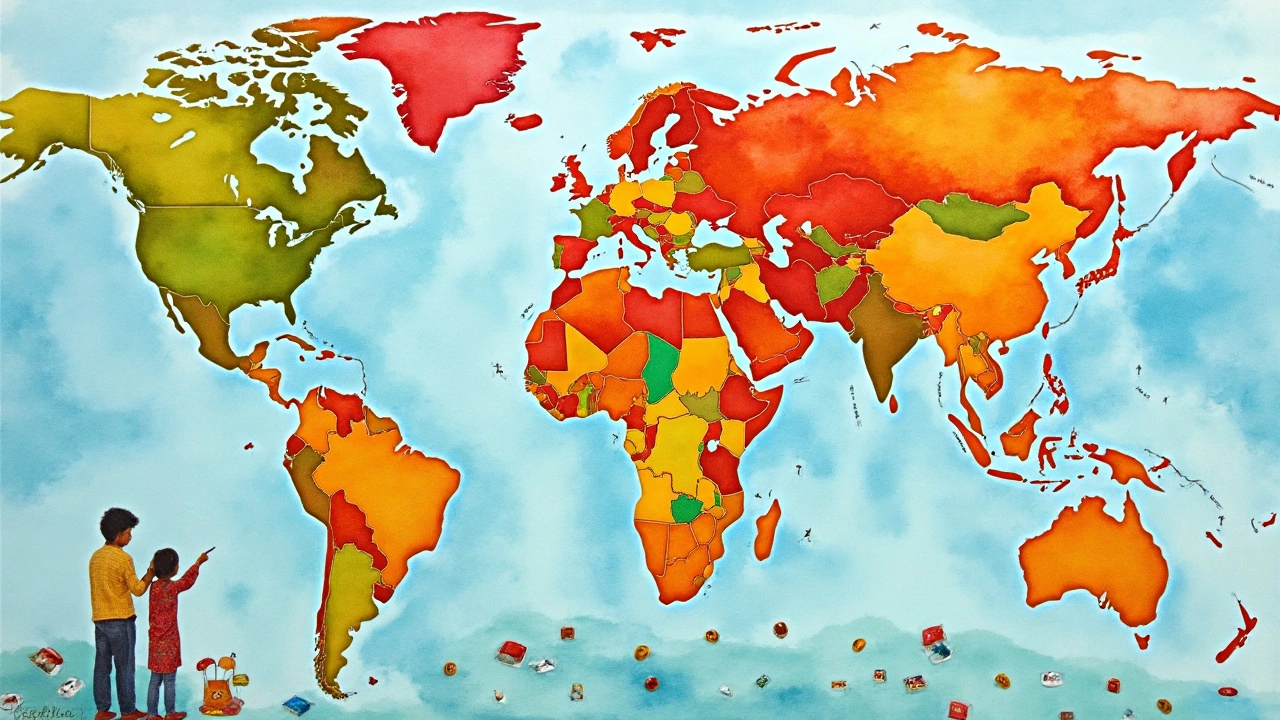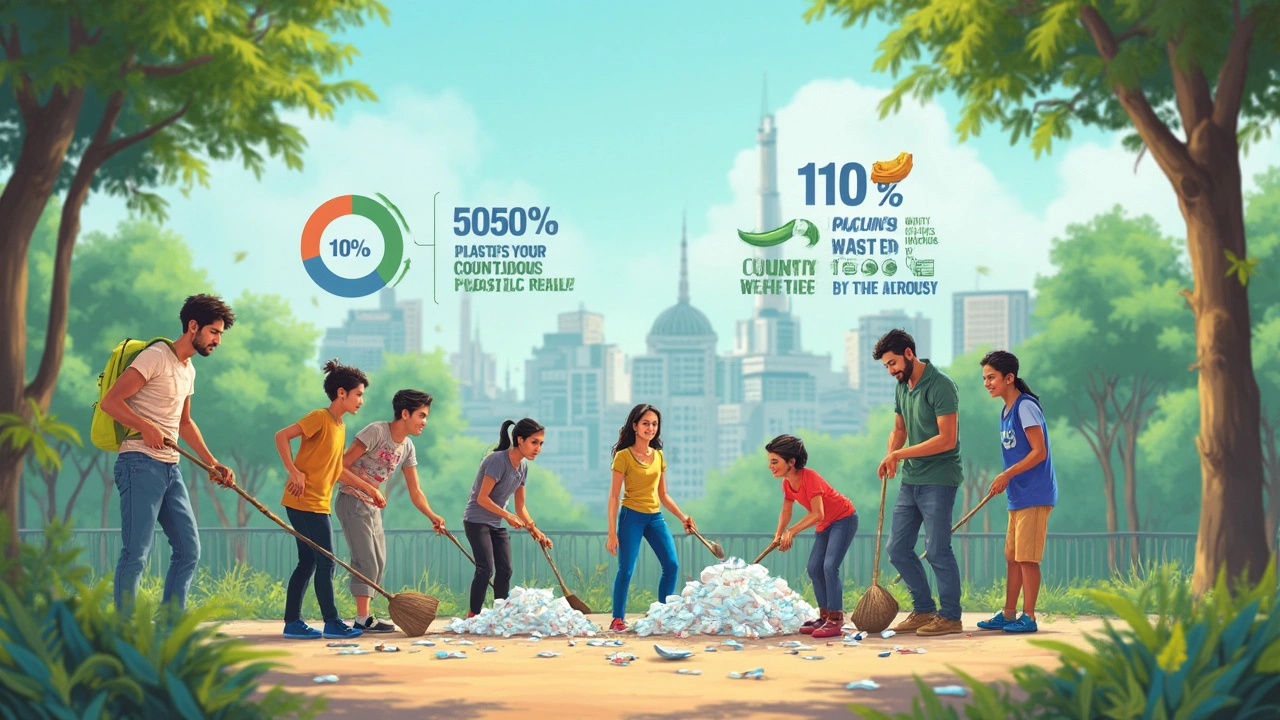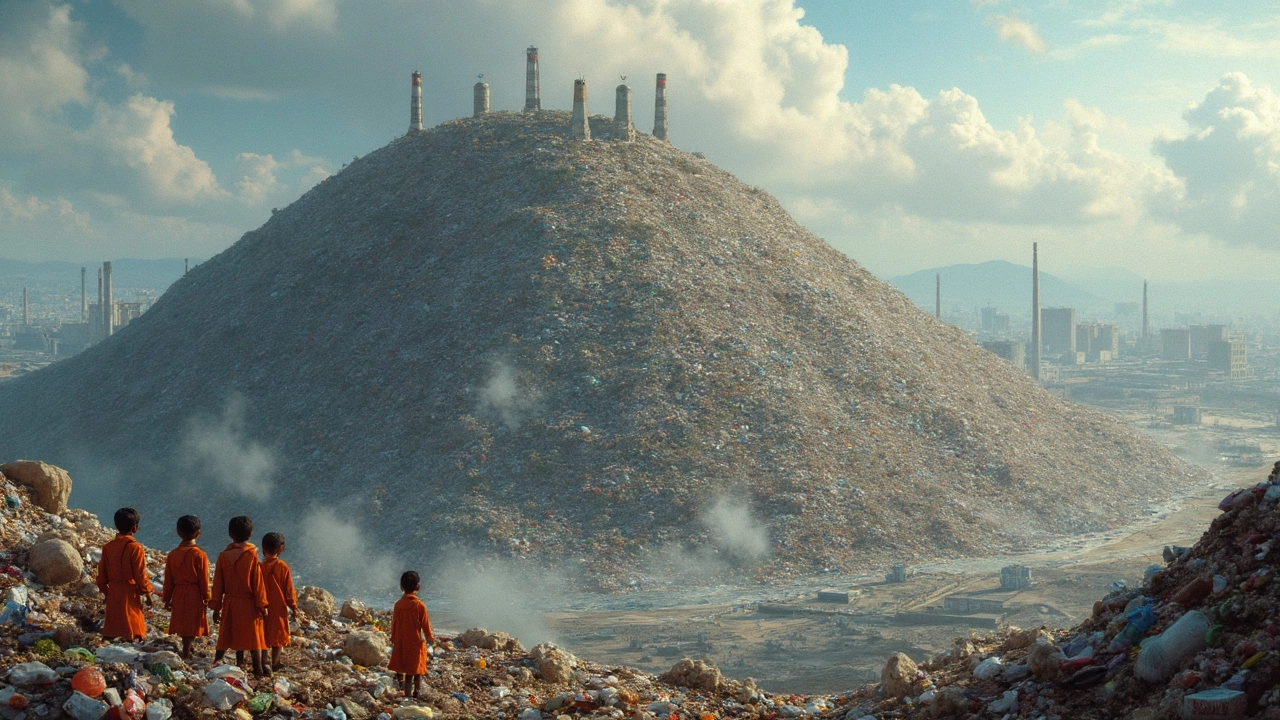Plastic is everywhere—packed into snacks, wrapped around toys, even used in the water bottles we stash in our gym bags. But have you ever wondered which country wastes the most plastic?
Chances are, you’re picturing the US or maybe China. And you’re not far off. The numbers are eye-opening. The United States leads the pack, tossing out more plastic per person than any other country. According to a study in Science Advances, Americans throw away over 42 million metric tons of plastic every year. That's nearly a fifth of the world's plastic trash from just 4% of its people.
This isn’t just about overflowing landfills. A big chunk of that waste never even gets recycled—most of it ends up buried, burned, or drifting into rivers and seas. Plastic pollution is visible everywhere, from city gutters to the remote corners of the planet. Ishaan, my own kid, loves collecting bottle caps from the local park, and let me tell you—the sheer amount is wild.
For families like mine, and for anyone hooked to their dog like I am with Bruno, the story feels personal every time we find plastic stuck in the grass or tossed in the woods. And it's not just about trashing nature; it’s about habits, business choices, and the way those single-use plastics sneak into our daily routines.
- How Much Plastic Is Actually Wasted?
- Who Wastes the Most Plastic—And Why?
- The Role of Plastic Manufacturers
- Plastic Waste Facts You Haven’t Heard
- What Can Companies and Consumers Do?
How Much Plastic Is Actually Wasted?
Plastic waste isn’t just some problem happening “somewhere else.” It’s massive, it’s constant, and it’s everywhere. Since the 1950s, humans have produced over 9.2 billion tons of plastic, and a shocking chunk—over 6.9 billion tons—has ended up as waste. Only about 9% ever gets recycled. The rest? It goes straight to landfills, incinerators, or just floats around cities and oceans.
You might be curious how that looks right now, by the numbers. Check this out:
| Year | World Plastic Production (million tons) | Plastic Waste Generated Annually (million tons) | Recycling Rate (%) |
|---|---|---|---|
| 2010 | 270 | 275 | 8 |
| 2015 | 322 | 300 | 9 |
| 2020 | 367 | 353 | 9 |
| 2023 | 390 | 370 | 10 |
Basically, for every piece of plastic made, another one is trashed. Even the best recycling programs can’t keep up with how much we toss. And here’s a kicker: almost half of all plastic waste made every year comes from packaging—those wrappers, bags, and containers you use once and forget about.
Most of that plastic can chill around for hundreds of years without breaking down. So, it sits in dumps, blows into rivers, or ends up in the gut of some unlucky sea turtle. Ishaan saw news at school about the Pacific garbage patch—a floating plastic mess bigger than Germany. That's not future drama, that's what we have now.
Bottom line: we’re making and wasting plastic way faster than we can gather or recycle it. The numbers are rising every year, pushed higher by online shopping, food delivery, and our love for convenience.
Who Wastes the Most Plastic—And Why?
The United States grabs the unwanted crown for being the country that wastes the most plastic. Americans toss out more plastic per person than anyone else, making the US the world leader in single-use plastic waste. The numbers back it up: the US sends over 42 million metric tons of plastic to the trash every year. That’s about 130 kilograms for every single person in the country.
It surprises a lot of folks to find that high-income countries are the main drivers of plastic waste. It’s not just about population—wealthier nations buy, use, and throw away more packaged products, which means more plastic hits the dumpster. Disposable culture runs deep, with everything from fast food containers to shrink-wrapped groceries adding to the pile big time.
Here’s a breakdown that shows just how much plastic is wasted in a year by some of the bigger players:
| Country | Total Plastic Waste (million metric tons/year) | Plastic Waste per Person (kg/year) |
|---|---|---|
| United States | 42.0 | 130 |
| China | 28.0 | 20 |
| India | 13.0 | 10 |
| Brazil | 11.3 | 54 |
| Indonesia | 9.1 | 34 |
Why does the US top the list? It’s the combination of high consumption, underwhelming recycling rates, and a throwaway mindset. Around 90% of the plastic waste isn’t recycled in the US—it’s either landfilled, incinerated, or exported overseas (where it often ends up in the ocean anyway). That single-use plastic bottle you grabbed at the gas station? Most likely, it won’t be getting a second life.
Let’s not forget developing countries. Places like Indonesia and the Philippines do produce a lot of plastic waste, but they generate way less per person compared to richer countries. What’s tricky is they often don’t have strong garbage collection systems, so their plastic is way more likely to float out to sea.
- Plastic waste is mostly a product of modern lifestyles and easy access to disposable goods.
- The "convenience factor"—think online shopping, takeout, pre-packed snacks—drives up the numbers really fast.
- Poor recycling infrastructure means plastic keeps piling up instead of looping back into use.
Certain cities and states are starting to ban single-use plastics or push for more recycling, but for now, the trash heap keeps growing, especially in countries that can afford a lot of stuff fast.

The Role of Plastic Manufacturers
Plastic manufacturers sit right at the heart of this issue. If you check out names like ExxonMobil, Dow, and Sinopec, you’ll see these companies crank out millions of tons of plastic resin every single year. In fact, a 2023 report from Minderoo Foundation put just twenty companies behind over half of all single-use plastic waste on the planet. That’s a small crowd making a huge mess.
Why do they keep pumping out more plastic? Simple: it’s cheap, easy to make, and there’s always demand from packaging, bottles, bags, and even tech gadgets. For the plastic manufacturing industry, business is booming, especially in countries where environmental rules are a lot more laid-back. This is a big reason why the plastic waste problem keeps growing.
If you’re wondering what these companies could do differently, here’s the real talk:
- Shift to recycled plastics instead of always making new stuff from oil and gas. Big names like Unilever and Coca-Cola have started pledging to increase recycled content, but those numbers are still small.
- Invest in better designs. If companies created bottles, wrappers, and containers that are easier to recycle, it’d actually make a difference. Most plastic isn’t even recyclable in practice because of how it’s made or what it’s mixed with.
- Back deposit return programs or refill stations. Some countries—like Germany—have had major success with bottle deposits, cutting down on single-use waste.
Right now, though, plastic manufacturers mostly focus on producing more, since that’s where the profit is. The pressure to switch gears often comes from laws, community pushback, or giant brands demanding greener supplies. But as of today, not enough of them are prioritizing big changes. Until the folks making the plastic change how they operate, it’ll stay an uphill battle for anyone trying to get a grip on plastic waste.
Plastic Waste Facts You Haven’t Heard
We already know plastic waste is out of control, but the real numbers can be hard to imagine. Here are some jaw-droppers people don’t talk about enough.
- Since the 1950s, the world has produced over 9 billion tons of plastic. Only about 9% of that has ever been recycled.
- In one year, the US alone throws out more plastic than every country in the European Union combined. That’s true even after accounting for population size.
- Globally, nearly half of all plastic used is for just single-use packaging—stuff like wrappers, bags, and food containers that get tossed within minutes.
- If you lay out all the plastic bottles used each year, they’d wrap around the Earth four times—every single day.
- About 2,000 different plastic items are used by the typical urban consumer every year, most of which aren’t recycled.
Check out the breakdown of who’s generating the most plastic waste by country. Some of these might surprise you.
| Country | Plastic Waste Generated (million metric tons/year) | Per Person Waste (kg/year) |
|---|---|---|
| United States | 42 | 130 |
| China | 31 | 22 |
| India | 12 | 9 |
| Brazil | 11 | 52 |
| Indonesia | 9 | 34 |
Single-use plastics make up the lion’s share of plastic litter in the ocean, especially around Asian and African coastlines. According to the Ellen MacArthur Foundation, by 2050 there could be more plastic (by weight) than fish in the world’s oceans if we don’t change course.
What really turns heads is that even when people dutifully toss plastics in the right bin, a lot of it still doesn’t get recycled. Poor sorting, food contamination, and lack of recycling facilities mean about 91% of all plastic heads straight for a landfill or the environment.
For families, little choices add up. Just swapping out single-use bottles or refusing a plastic bag at checkout drops hundreds of plastic items from your yearly total. Tracking your household waste for even a week might shock you and show where quick wins are possible.

What Can Companies and Consumers Do?
Tackling plastic waste needs action from both companies and regular people. Let’s break it down—what actually makes a dent?
Companies, especially those in the plastic manufacturing world, have serious power to change things. Some brands have started swapping out single-use packaging for refillable or compostable alternatives. Big names like Unilever and Nestlé, for example, have launched trials for reusable containers at major supermarkets. It’s not a complete shift, but it’s how habits start to change.
Here’s where companies are making moves that really count:
- Switching to alternative materials: Coca-Cola and Evian are testing bottles from 100% recycled plastic. Makes a real difference when scaled.
- Cutting virgin plastics: Lego announced it is phasing out new plastic and using plant-based or recycled plastic in its toys.
- Producer responsibility: Some places, like Germany, require companies to pay for the waste they create—this pushes businesses to rethink packaging designs altogether.
But companies aren’t the whole story. Consumers drive demand. What we buy and how we use plastic pushes companies to make better choices. Here’s what regular folks (me, you, even my son Ishaan when we shop) can actually do:
- Pick reusable packaging: Bring your own shopping bags, use refill stations, and avoid individually wrapped snacks.
- Learn recycling rules: Not all plastics are created equal. Most caps and pouches don’t get recycled, so check locally before you toss them.
- Call out waste: When you see over-the-top plastic packaging, let companies know. Social media pressure works, especially on big brands.
The impact adds up fast. Check out the numbers in this table comparing a few company efforts:
| Company | Plastic Reduction/Results | Year |
|---|---|---|
| Unilever | Reduced virgin plastic by 100,000 tons | 2023 |
| Nestlé | Pilot reusable packaging in 12 countries | 2024 |
| Coca-Cola | 63% bottles in North America made from recycled materials | 2024 |
| Lego | Phasing out oil-based plastics for new plant-based ones | by 2025 |
It’s not just about guilt-tripping people or pushing all the blame onto companies. It’s about finding smart moves that stick—whether that’s finally ditching plastic wrap at home or joining neighborhood plastic-free challenges. Even if you have a stubborn stash of plastic bags at home (trust me, mine’s a mountain), starting somewhere always beats doing nothing.
